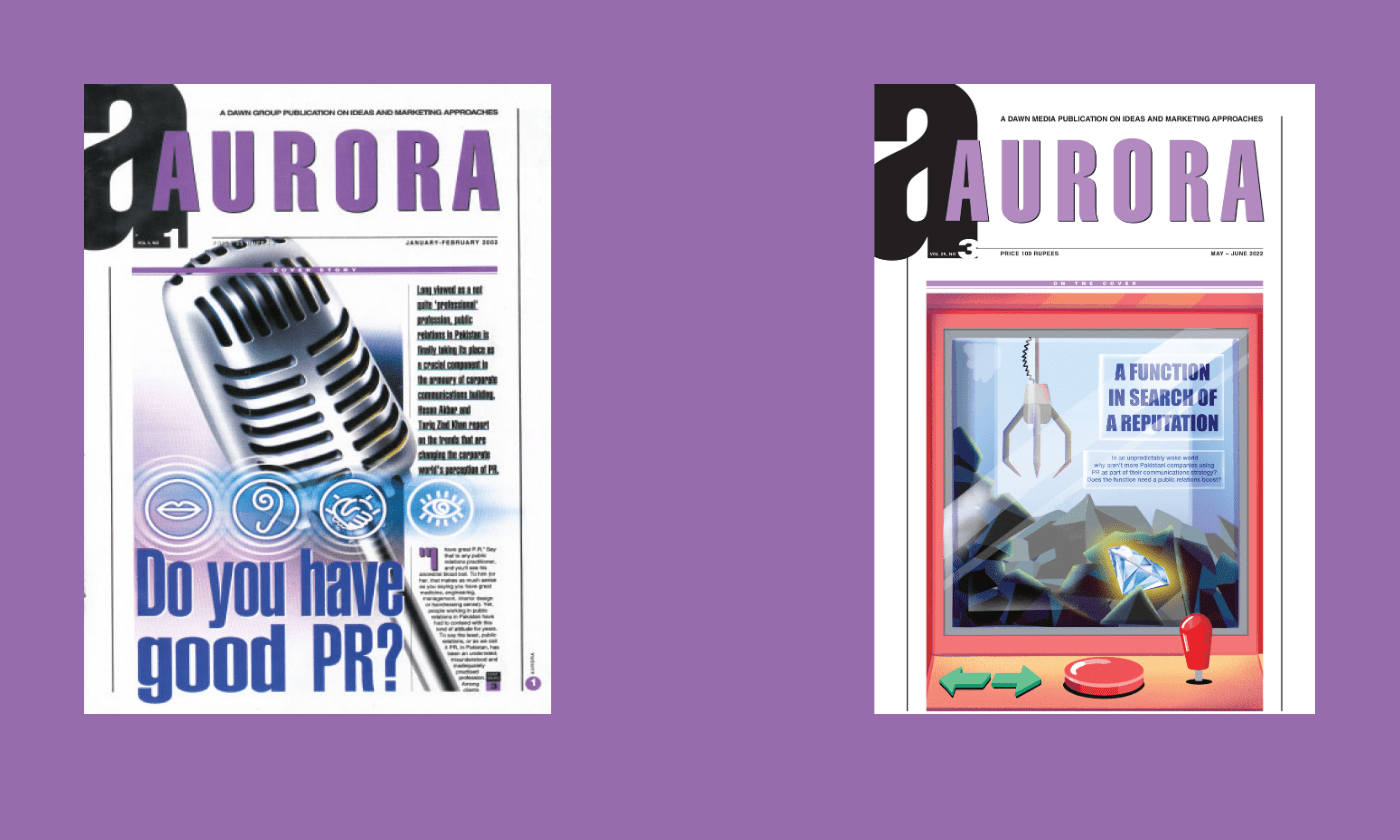Managing Reputations
At the time when Aurora’s cover story Do You Have Good PR? was published in the January-February 2002 edition, we observed that PR was not viewed as a “professional profession” and was often met with scepticism.
In fact, according to a PR professional at the time, the profession’s function ranged from ensuring that a brand’s press releases were published in the leading daily newspapers to picking up the chairman’s wife from the airport – hardly the hallmarks of a strategic discipline. In fact, PR was to a large extent viewed as a “corporate luxury.” At that time, it was estimated that there were fewer than 10 major PR agencies in Pakistan. The first was Mediators, established by Babar Ayaz, followed by several others including Asiatic Public Relations (APR), Corporate and Marketing Communications (CMC) and Xenith. The growth of PR was attributed to the multinational companies and, to a large extent, many advertising agencies carried out PR functions or established their own PR divisions or subsidiaries, while a significant number of organisations had their own in-house PR departments.
Fast forward two decades, and PR in Pakistan has become a distinct function within the communications industry. A major reason for this is the increasing importance placed on corporate communications, especially in the digital space, where a single negative post can easily snowball into a reputational crisis for an organisation. Social media has also led the way in transforming the PR function, moving it away from a focus on gaining an editorial-led presence in the print or electronic media to the heavy use of social media influencers to drive the brand narrative, especially in a world where consumer expectations demand purpose and authenticity from the brand communication.
Despite some considerable progress, several challenges still have to be overcome. The first is the lack of dedicated courses in higher education institutions for PR, and learning on the job is still the only effective way for new entrants to learn about their profession. Another is creativity in terms of developing PR-specific initiatives that go beyond an increasingly saturated influencer ecosystem. Then there is the concern in the way brands still actually view PR; the fact that overall PR budgets account for three to eight percent of a brand’s marketing budget is indicative of the priority the function is given.
As one of the cover stories of Aurora’s May-June 2022 edition – Does PR Need PR? – concluded, PR companies must do a better job of promoting themselves. Put another way, PR itself needs PR.
From Aurora’s archives
INTERVIEW
 Fareshteh Aslam, CEO, Talking Point PK
Fareshteh Aslam, CEO, Talking Point PK
ARTICLES
 From Influencers to AI – Zohare Ali Shariff
From Influencers to AI – Zohare Ali Shariff




Comments (0)